

Darning a woven fabric:
Darning with a sewing machine:
Mending small holes in knits:
Pre-treatment in the case of moths:
If the holes in your garments were caused by moths, the first step will be to kill them, and then we can get to the mending. Put your garment in a sealed plastic bag and store it in the freezer for a few days. Take it out of the freezer and out of the bag and allow it to return to room temperature before storing it away again in a sealed plastic bag in the freezer. This will kill any possible larvae as well as bacteria and other kinds of pests.
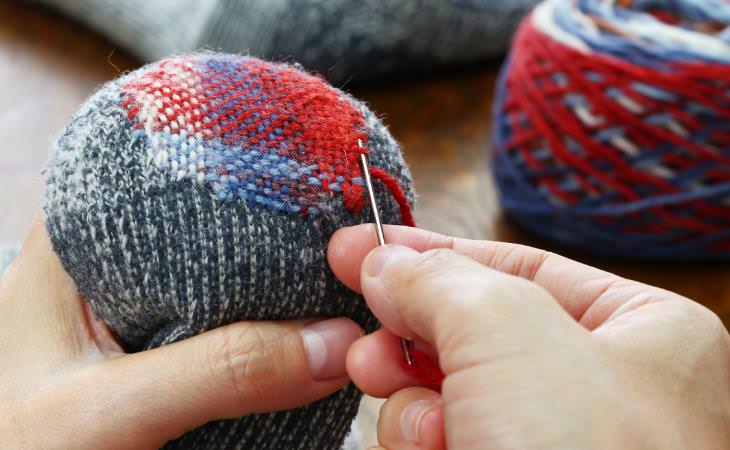
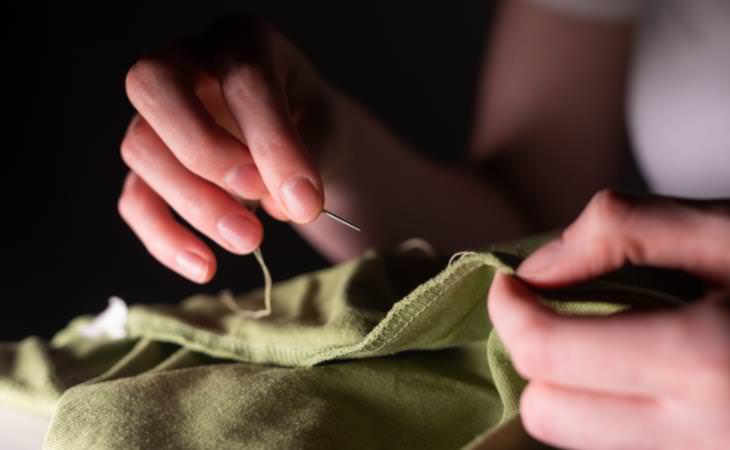
You can also use a patch, and simply iron it on.
For some fixes we can use a needle but not for stitching. For example, a snag or a loose thread. This video will show you a couple of methods:
 5:04
5:04
These Life Hacks Will Take Good Care of Your Shoes
Whether you're a seasoned collector or just looking to extend the life of your favorite pair, these insights will transform how you care for your footwear.
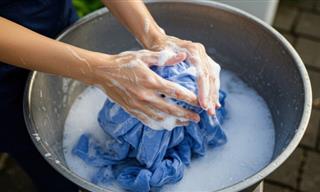
Reviving Dull Linens: Understanding Laundry Stripping
Prior to attempting this popular cleaning technique, it's essential to understand precisely what laundry stripping entails and whether this labor-intensive procedure is appropriate for your garments and linens.
 8:07
8:07
The 5 Best Ways to Do Your Laundry Quickly and Efficiently
What's the best way to clean a pair of shoes, or remove grease from fabric? Take a look:
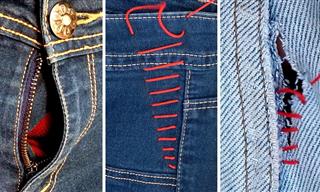 12:28
12:28
32 Tips and Tricks for Beginners to Sewing
In the following video, we've carefully curated 32 essential tips and tricks to ease your entry into the world of sewing.
 13:42
13:42
Flying Soon? These Clothing Choices Are a Bad Idea
This guide covers what not to wear when going to an airport.
 3:54
3:54
Easy Fix for Holes in Your Pants- Nearly Invisible!
Chafing season causing holes in your pants? Fix them effortlessly with this quick, nearly invisible method.
 5:39
5:39
12 Ways to Tell Your Cat You Love Them So They Understand
How to make a cat understand you love them? Here are 12 ways.

Eradicate Your Dry Skin with These Fantastic Tips
Everyone wants their skin looking its best, so here are some wonderful tips that'll help you get rid of any dry skin that is bothering you.

10 Tips for Cleaning With Salt - Number 8 is My Favorite..
Salt can be found in every home, but besides for cooking, it is efficient and useful for cleaning. Here are 10 effective ways to use salt for cleaning.
 7:52
7:52
Everybody Should Know How to Tie These 9 Knots
Knowing how to tie different kinds of knots is a very useful and important skill. Learn how to tie these 9 most common knots with this video tutorial.

Laundry Tips: Make Your Towels Soft and Fluffy Again
Here are some useful tips that will help you make your crusty towels feel soft and fluffy again while also increasing their longevity.

Should You Change Shampoos For Silvering Hair?
Are you making the transition to silver, shiny locks? Learn how to keep your silvering hair as beautiful as ever with these tips!
 1:03
1:03
Never Leave Water Bottles in Your Car.. Here's Why!
There are a lot of things that we know shouldn't be left in the car, but you probably never thought that this item could cause such harm!
 7:23
7:23
Discover 7 Ways to Make Your Home Smell Great
Check out these seven wonderful ways to keep your home smelling clean and fresh without breaking the bank!

DIY Body Oils: Nourish Skin with These 6 EASY Recipes
Nourish your skin with these amazing homemade body oils.

11 Household Items You Should NEVER Throw Away
These ordinary household items may seem like they belong in the bin, but organizing experts advise to not throw them out, but repurpose them instead!
 4:08
4:08
Lost a Key and Need to Pick a Lock? Do This!
Need to pick a lock? Here's how to do it.

20 Foods That Should Be Kept Out of the Refrigerator
The refrigerator allows us to keep food fresh for longer, but there are certain foods, such as the 20 here, which are not meant for the cold...

9 Ways to Care for Your Feet So They Don't Pain You
What's the best way to go about taking care of your feet? Here are 9 essential tips.

Aging Hands? Keep Them Looking Young with These Tips
With proper care, and this handy advice, your hands will keep your age hidden for longer.

8 Things That Should Always Be Kept In A Safe
Even if you don't have wads of cash or jewelry lying around, there are a few valuables everyone has that should always be kept stored in a safe

Think its Healthy? These Foods Are Ultra-Processed
These foods are more processed than you think.

Show Your Partner That You Care with These 7 Great Tips
Showing your partner that they are a priority in life doesn’t have to be a chore. Here are 7 ways to show them that you care.

How To Keep Your Bread Fresher For That Much Longer...
if you're wondering how to make your bread last longer, read the following article and learn about 5 different methods of doing just that!

Dog Behavior 101: How Dogs Show They’re Upset
Your dog may be mad at you and may not even know it!

How to Distinguish between Chinese, Korean, and Japanese
After reading this guide, you'll be able to tell the Chinese, Korean, and Japanese languages apart!

Comparing Cooking Oils: A Guide for Benefits and Risks
In this article, we'd like to provide a clear, informative comparison to help you choose the right oil for your needs.

Don't Throw Away That Shower Curtain Liner Just Yet
Here are 10 clever ways to clean, upcycle, or reuse a shower curtain before you throw it away for good.

The Surprising Uses of Lemon Salt Outside the Kitchen
Here’s a look at some unexpected ways to use lemon salt beyond the kitchen.

Save Your Dog from Choking with This Emergency Maneuver
What do you do if you see a dog choking? This guide explains all you need to know.

Granny Always Knows the Answer to Life's Problems
Life is full of little problems. So that's why you need to ask your granny for the answers.

Healthy Baking: Tips for Making Healthier Baked Goods
Check out these tips that will help reduce fat and sugar in your baked goods and make them more nutritious.

This Memory Technique Could Help You Remember Everything
If you have trouble remembering things, this mnemonic strategy could be just what you're after.
 8:02
8:02
Tutorial: How to Fix A Leaking Outdoor Faucet
This video shows how to repair a leaking outdoor faucet.
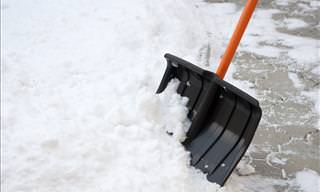 3:54
3:54
Shoveling Snow This Year, Use This Great and Simple Trick
Got a lot of snow to shovel? Here's the easiest and safest way to do so.

Water Leaks at Home? Here Are the Real Reasons Why
These are the main reasons homes spring leaks—and how to stop them in their tracks.

Making Your Tea in the Microwave Isn’t a Good Idea
Microwaving tea might be convenient, but it isn’t the smartest thing to do. Even science says so.

Is Your Garden Healthy? Test It with These Soil Tips
How healthy is your garden? Test it out with these helpful tips.
 3:57
3:57
We Can Learn a Lot About a Dog From How It Sleeps...
This video breaks down the most common doggie sleeping positions to gives you some great information about why your dog sleeps the way it does and what it may mean.

15 Signs of Infidelity That Are Too Easy To Miss
Unsure of whether your partner is having an affair? These 15 tips will give you a clear indication.

Wow! Even We Were Amazed At These 11 Ingenious Tips
Everyone needs some tips in life, and these 11 are worth remembering because they'll help you solve a variety of problems, make life easier and save money!

9 Ways to Keep Your House Clean Using Just a Simple Lime
Limes are just as good as lemons when it comes to cleaning. Here are 9 great ways to clean with them.

Warning! Eating Too Much Licorice Can Damage Your Health!
Eating too much licorice can be dangerous. Read here to find out more.

10 Kitchen Items You Should Never Keep Near the Stove
Here’s a look at what should never live near your stove—and where to put them instead.

11 Common Phrases That Could Be Ruining Your Conversations
These common phrases are more passive-aggressive than you think.
 2:15
2:15
How to Win at Every Tic Tac Toe Game...
Unlock the secrets to mastering Tic Tac Toe with our latest video guide.
 14:58
14:58
What More Can You Do With These Everyday Items? Amazing!
What more can you do with these everyday items? Find out here!
To enable your Ad-Free Subscription, please fill the fields below
Your subscription was successful, now you can enjoy an ad-free experience!! Note: To make sure you get no ads, please make sure to log in to your account. If you are logged in already, then refresh the page. The subscription can be cancelled at any time.


